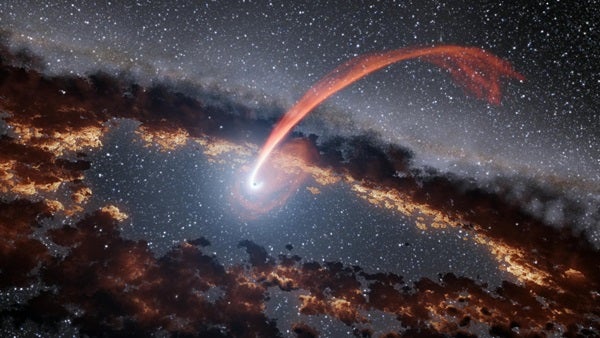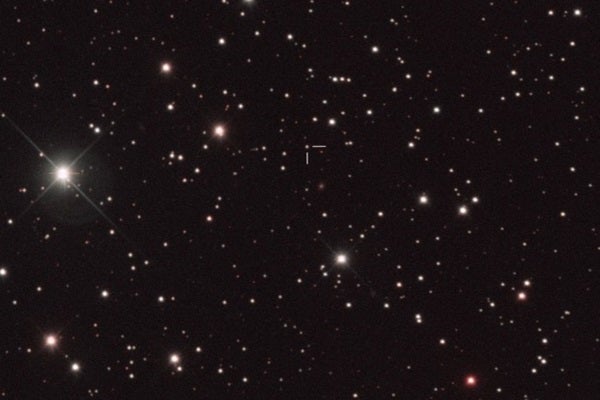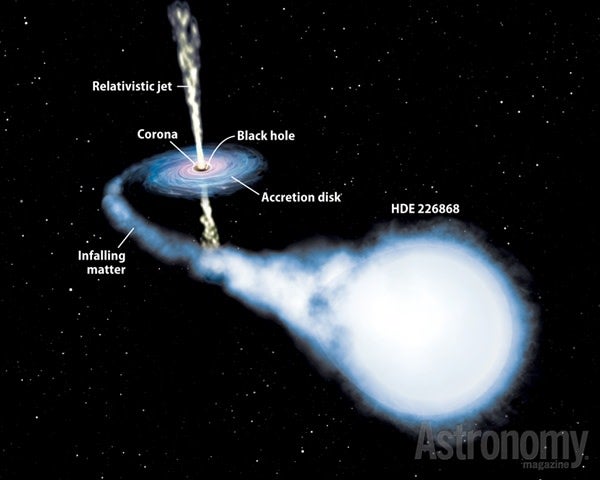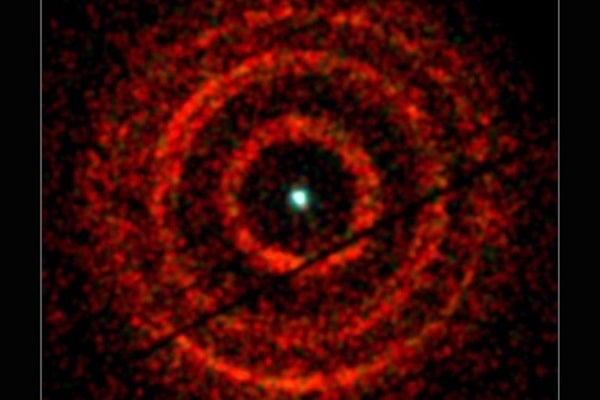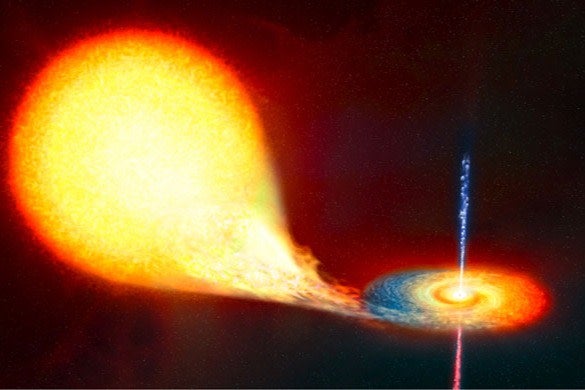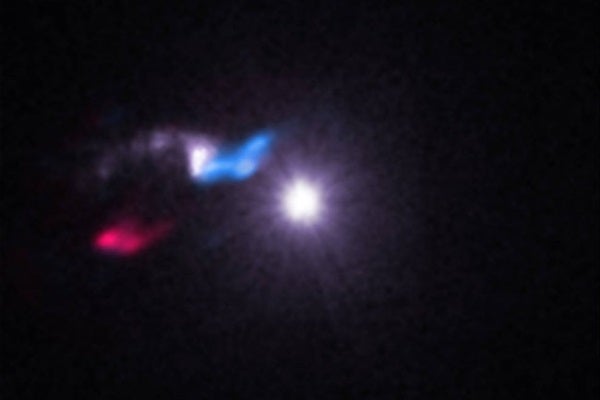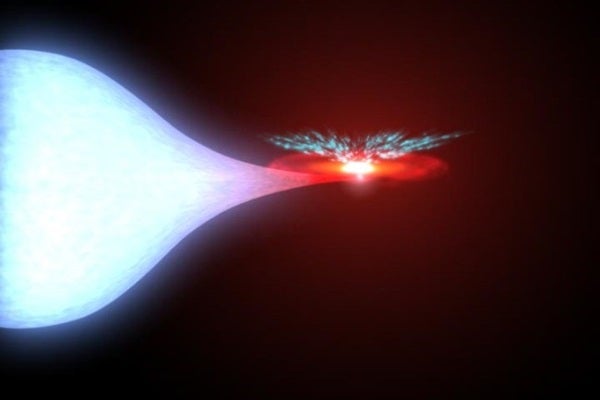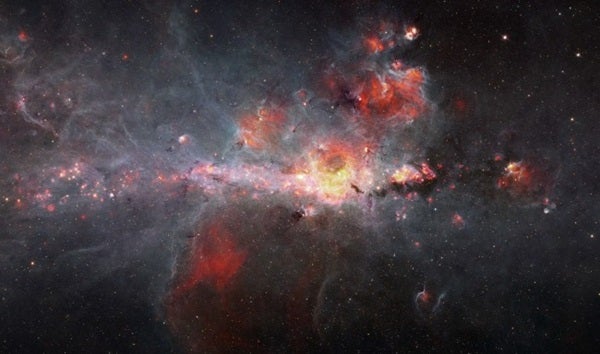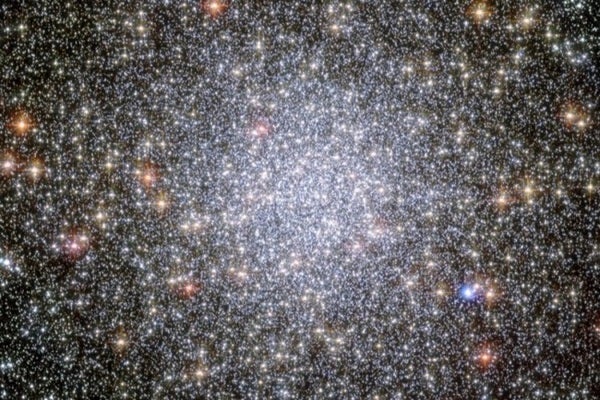However, based on the number of stars in our galaxy, there should actually be tens of millions out there. The trouble is that, unless they’re near another star, they can be hard to detect. In these binary systems, a black hole can steal material from its companion star, generating distinct X-ray light in the process. A 2016 paper reported 77 nearby candidate black holes from such X-ray observations. We’ve curated a list of 10 of the closest black holes to Earth that astronomers know a little about.
Because of their shrouded nature, black holes are hard to study. So scientists are continually learning more about these objects and refining black holes’ known properties, particularly mass, as telescopes gather more evidence. The numbers listed here include astronomers’ current best estimates of these black hole properties.
A0620-00, or V616 Monocerotis
This black hole occasionally releases dramatic outbursts of X-ray light. One of those outbursts happened in 1917, and was how the system was discovered. During an outburst in 1975, V616 Monocerotis brightened over 100,000 times, becoming the brightest X-ray source known at the time.
- About 3,500 light-years away
- 6.6 solar masses
- Paired with a K-type main sequence star orbiting every 7.75 hours — less than the average work day
- Its companion star is only around 40 percent of our sun’s mass. And the star is continually losing mass to the black hole, whose pull is so strong it’s squeezed into an ellipsoid instead of a sphere.
Cygnus X-1
Scientists suspect the black hole Cygnus X-1 began life as a star 40 times the mass of the sun. It likely collapsed directly to form a black hole some 5 million years ago — around the same time the first mammoths show up in fossil records on Earth.
- 6,000 light-years away
- 14.8 solar masses
- The black hole has an event horizon 185 miles across — about the length of New Hampshire.
- Cygnus X-1’s companion star is a blue supergiant variable star that orbits every 5.6 days at just one-fifth of the sun-Earth distance.
V404 Cygni
In 2019, scientists reported a wobble in giant jets of particles shot out by the black hole in V404 Cygni. They think the wobble could be caused by the black hole warping space-time.
- 7,800 light-years away
- 9 solar masses
- Paired with an early K giant star that’s 70 percent as massive as our own sun, but six times larger in diameter.
GRO J0422+32
This black hole is either the smallest ever found that formed from the collapse of star, or it could be a neutron star — the verdict is still out.
- 7,800 light-years away
- 3.66 to 5 solar masses
- Companion to an M-type main sequence star named V518 Per
Cygnus X-3
Its mass isn’t well measured, so scientists are uncertain if Cygnus X-3 actually holds a black hole or a neutron star. The object is paired with a Wolf-Rayet star — an incredibly bright object with an unusual distribution of elements, particularly on its surface — that is one of the brightest stars in the galaxy. The star will likely become a black hole itself fairly soon, so stay tuned — for the next million years or so.
- 20,00 light-years away
- Roughly 2 to 5 solar masses
GRO J1655-40
This black hole and star are traveling through the galaxy at 250,000 mph. For comparison, the sun cruises at only 44,740 mph. Astronomers think they achieved their breakneck pace when the black hole was created by an asymmetric supernova, which gave the system a kick.
- 11,000 light-years away (perhaps much closer)
- 7 solar masses
- Paired with an evolved F-type star that’s two times as massive as our sun.
- The star and black hole are locked in an orbit every 2.6 days.
- The black hole spins 450 times per second — fast enough to warp the space around it.
Sagittarius A*
Sagittarius A* (pronounced A-star) is the Milky Way’s central supermassive black hole. It was first noticed in 1931, thanks to a radio signal coming from the center of the galaxy. But by observing the motions of nearby stars over decades, and watching clumps of gas near the object, astronomers have since firmly determined that it is indeed a supermassive black hole. What’s more, they now know most large galaxies also have them.
- 25,640 light-years away
- More than 4 million solar masses
47 Tuc X9
Scientists are still debating whether there’s actually a black hole in the globular cluster 47 Tucanae. Recent studies offer evidence for and against the idea. But, if it is there, it would be a rare example of a black hole in a globular cluster — something astronomers long thought was impossible. It would also have the closest orbit ever seen between a black hole and a star.
- 14,800 light-years away
- Mass unknown
- Every 28 minutes, the black hole orbits its companion white dwarf star at a separation of just 2.5 times the distance between Earth and the moon.
XTE J1118+480
- 5,000 to 11,000 light-years away
- More than 6 solar masses
- Paired with a star that packs just 20 percent of the sun’s mass
- Suspected to have been formed by a metal-rich star that underwent a supernova
GS2000+25
- 8,800 light-years away
- 7 solar masses
- Paired with a late K-type star with 50 percent of the sun’s mass
- Binary pair orbits every 8.26 hours

